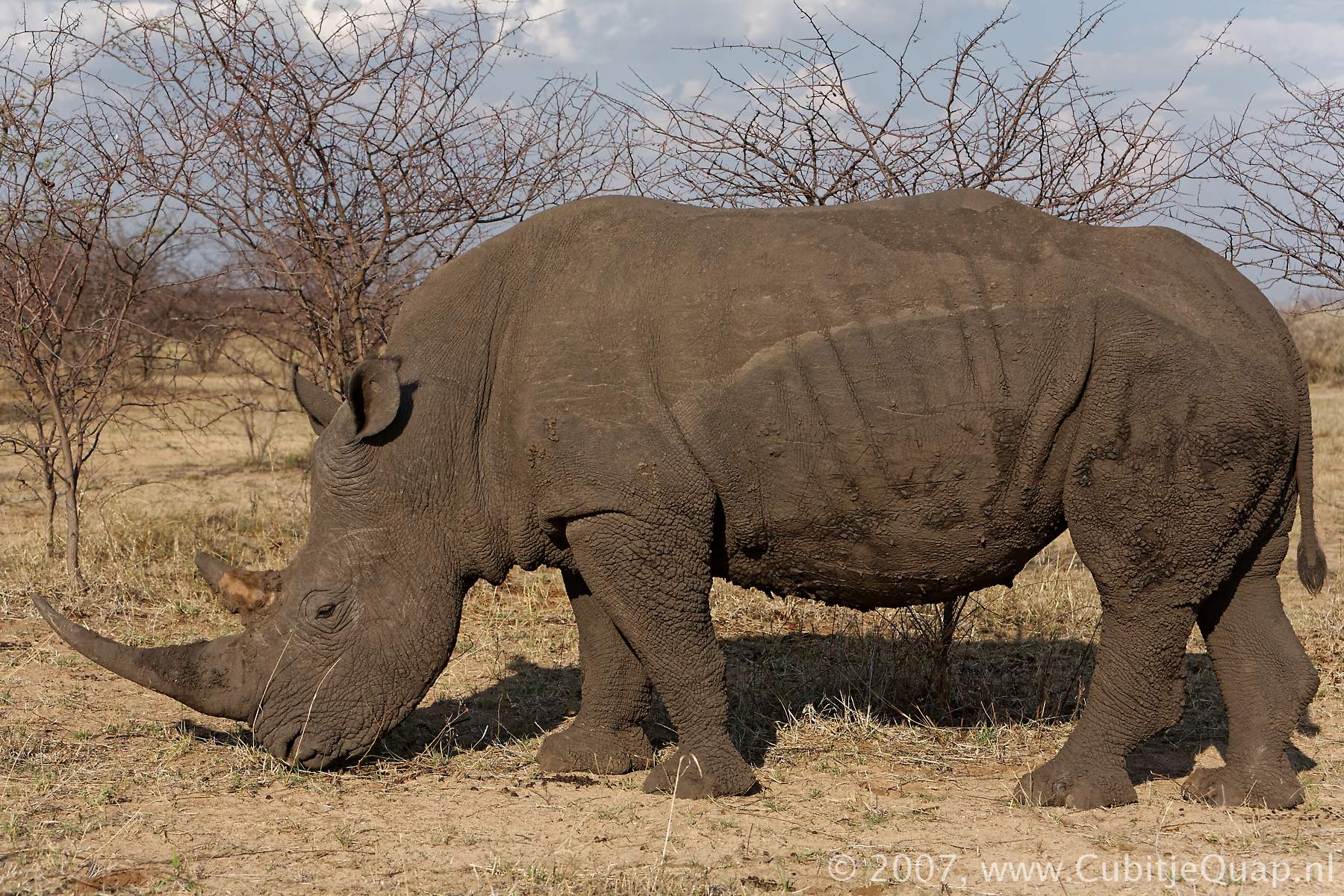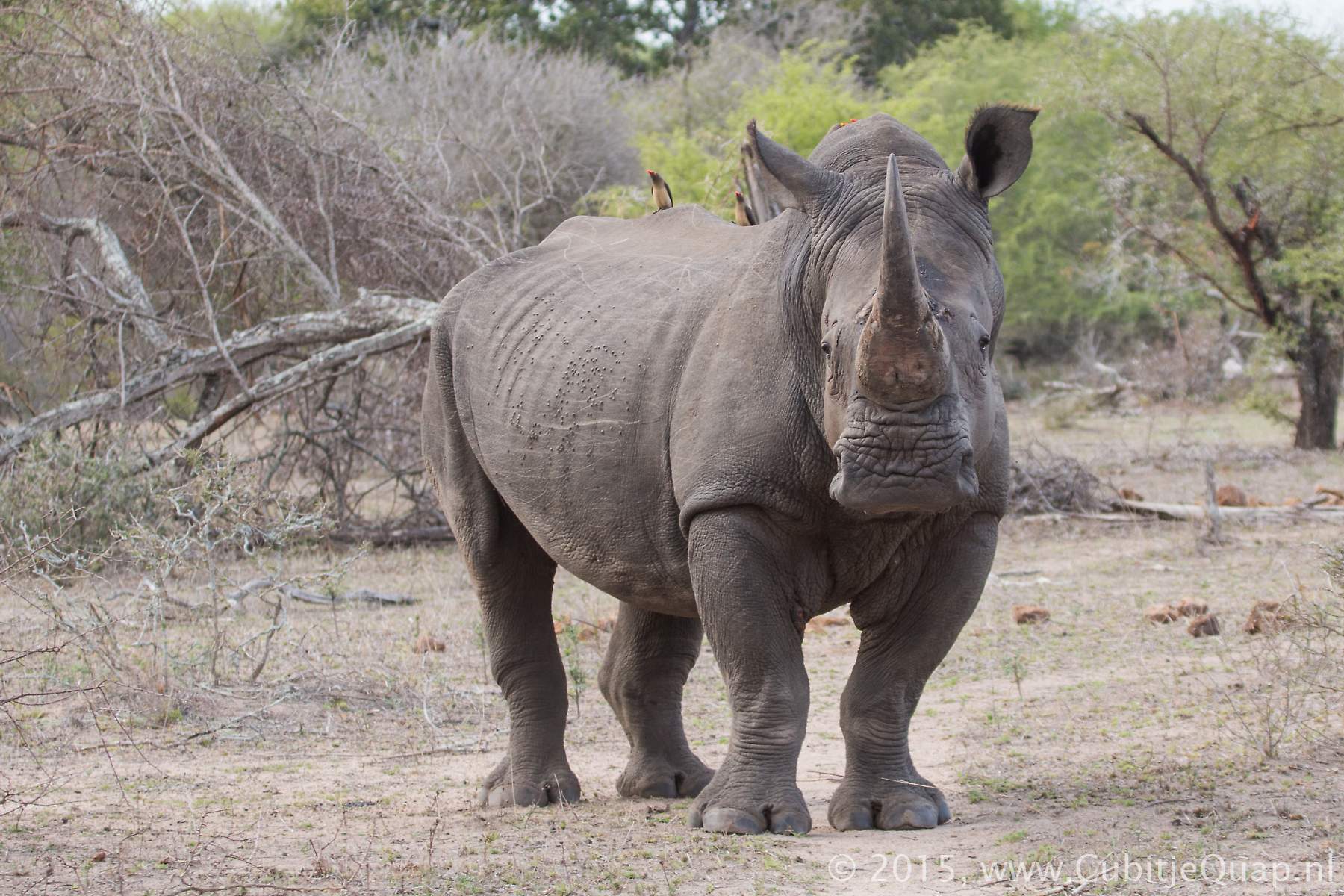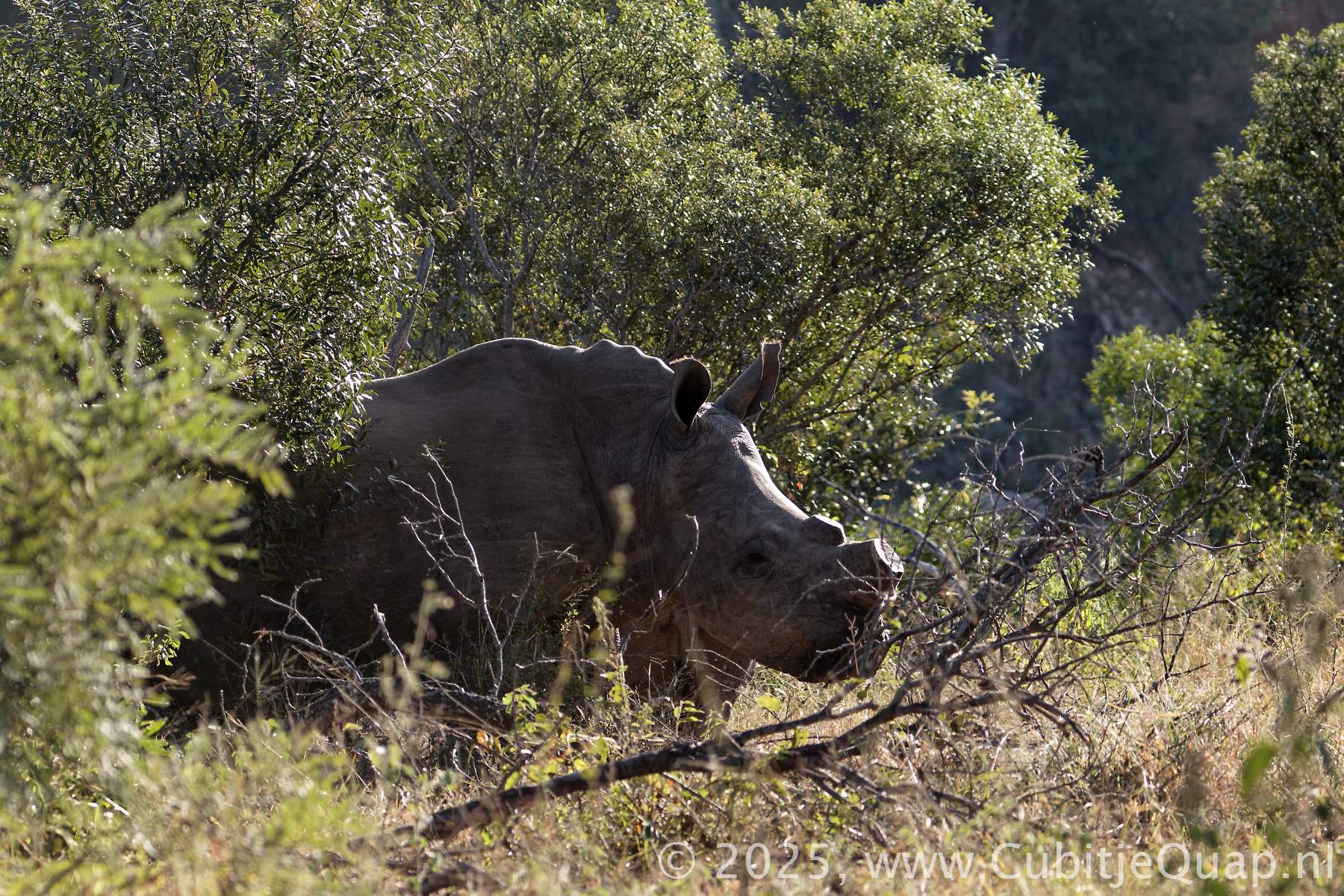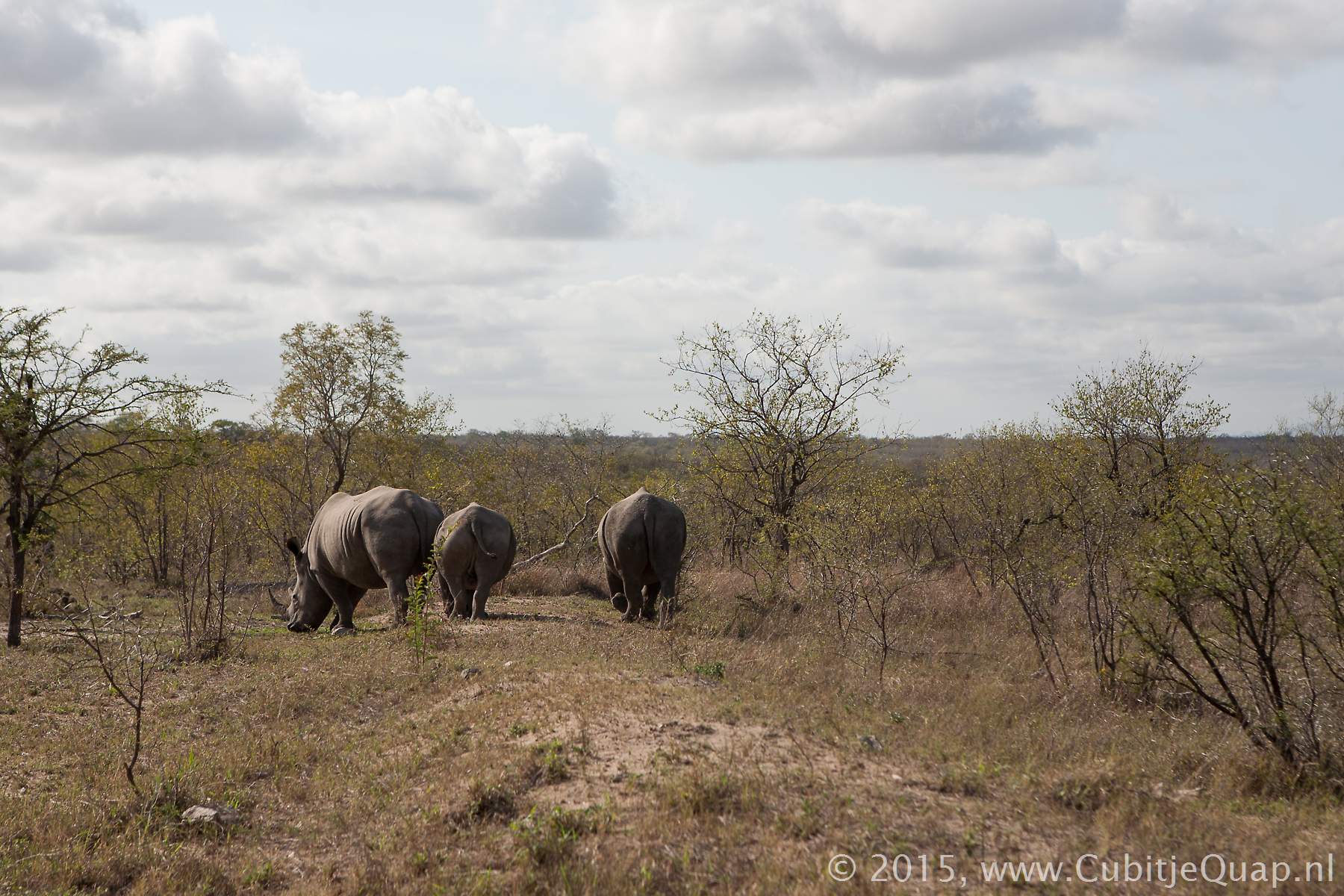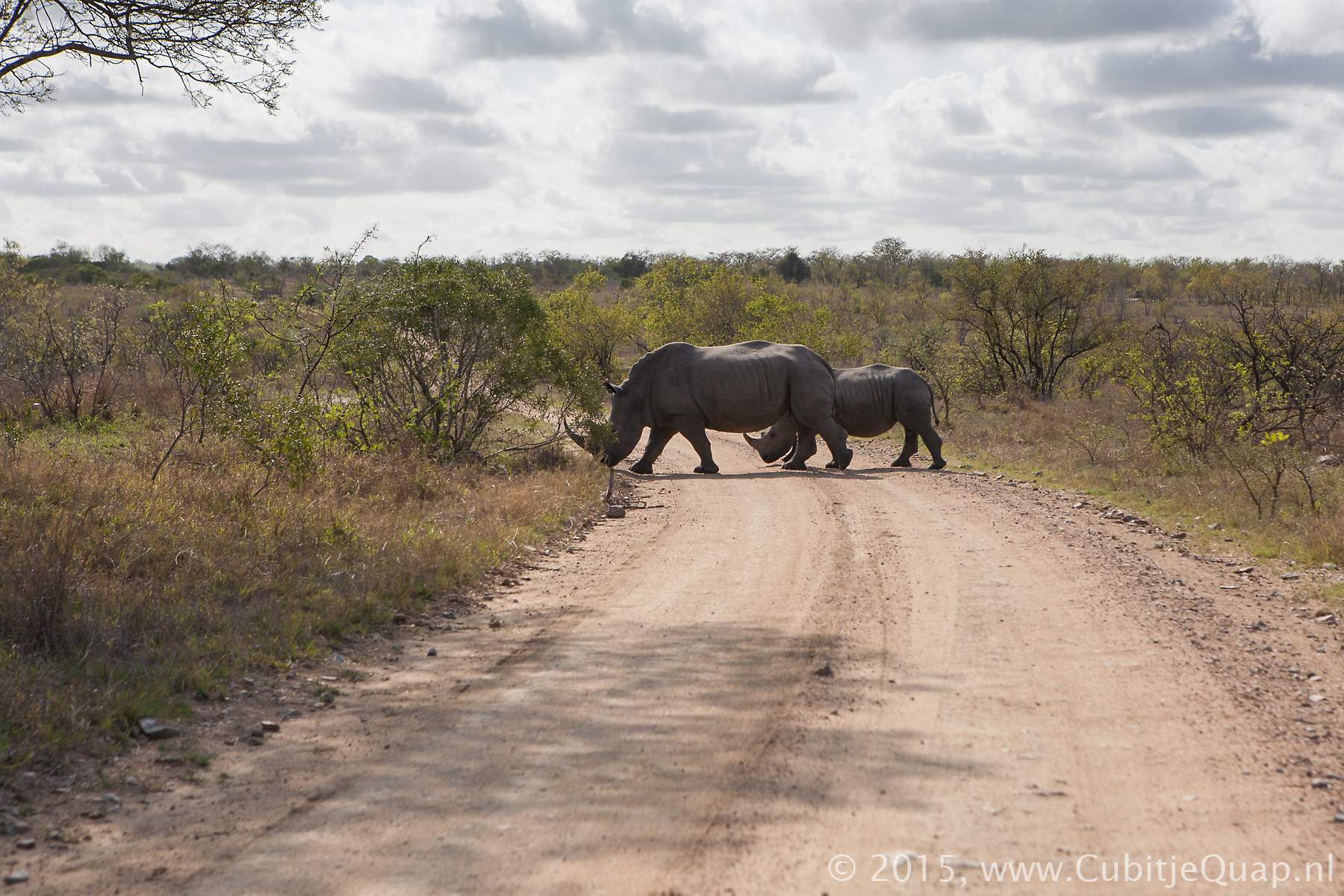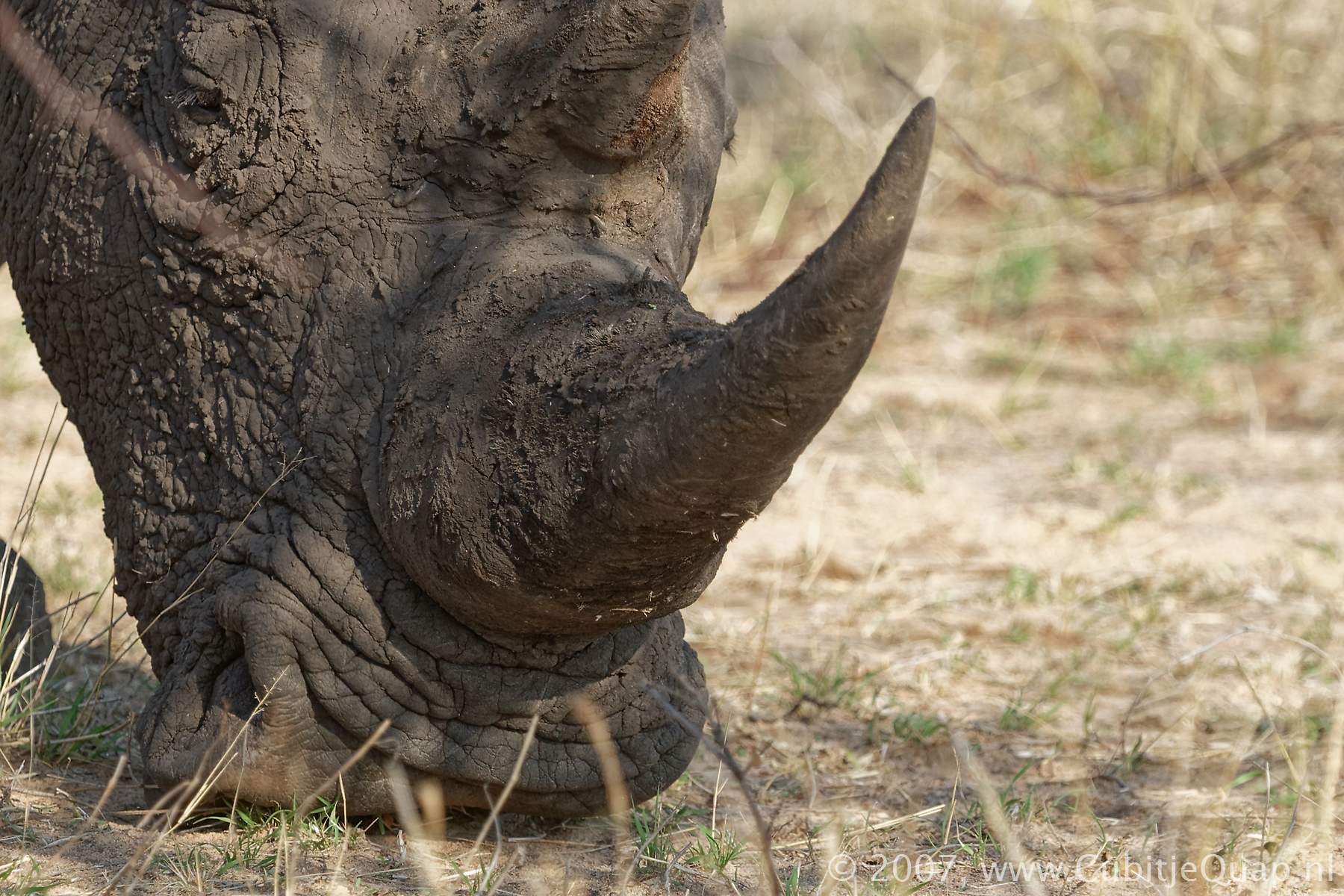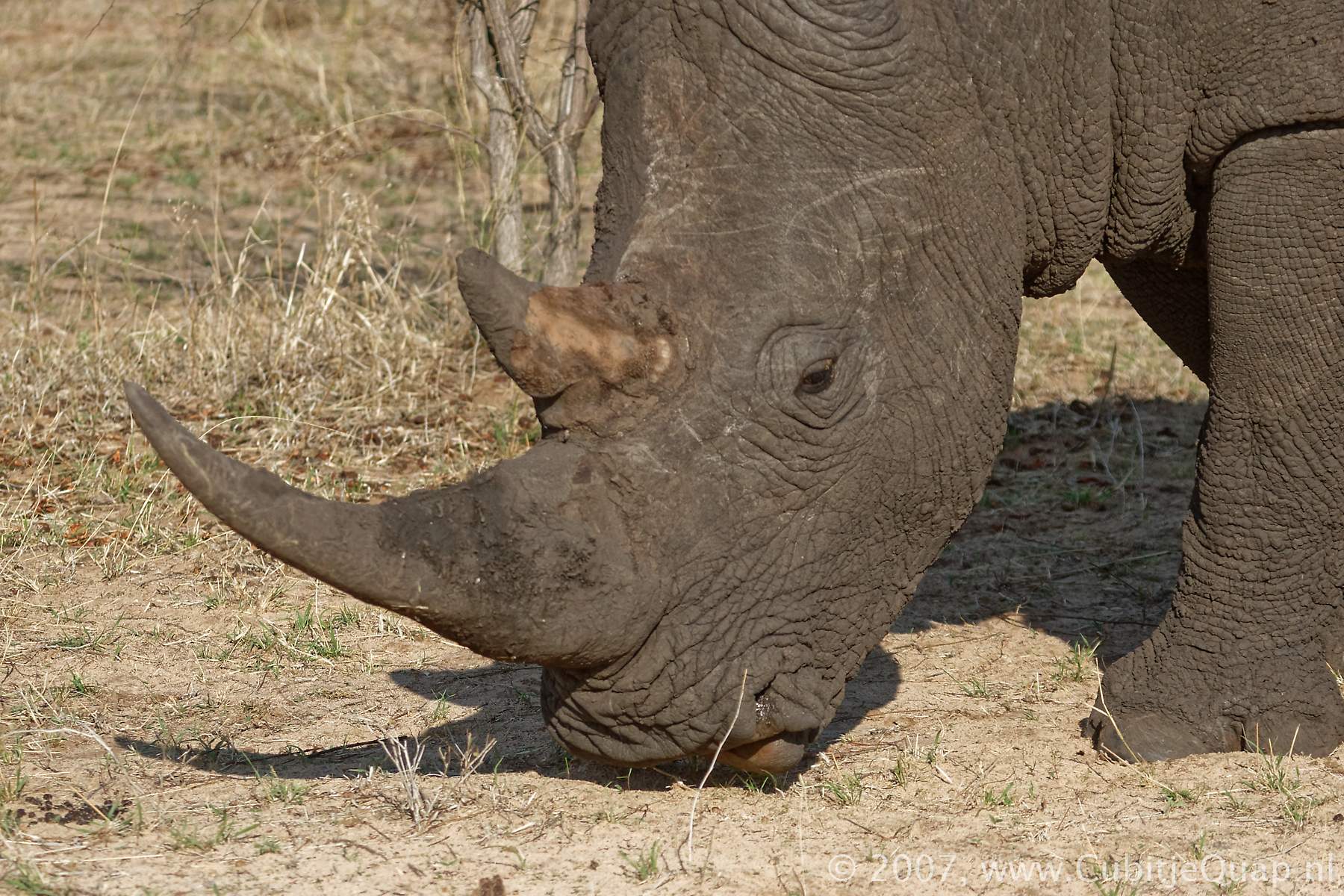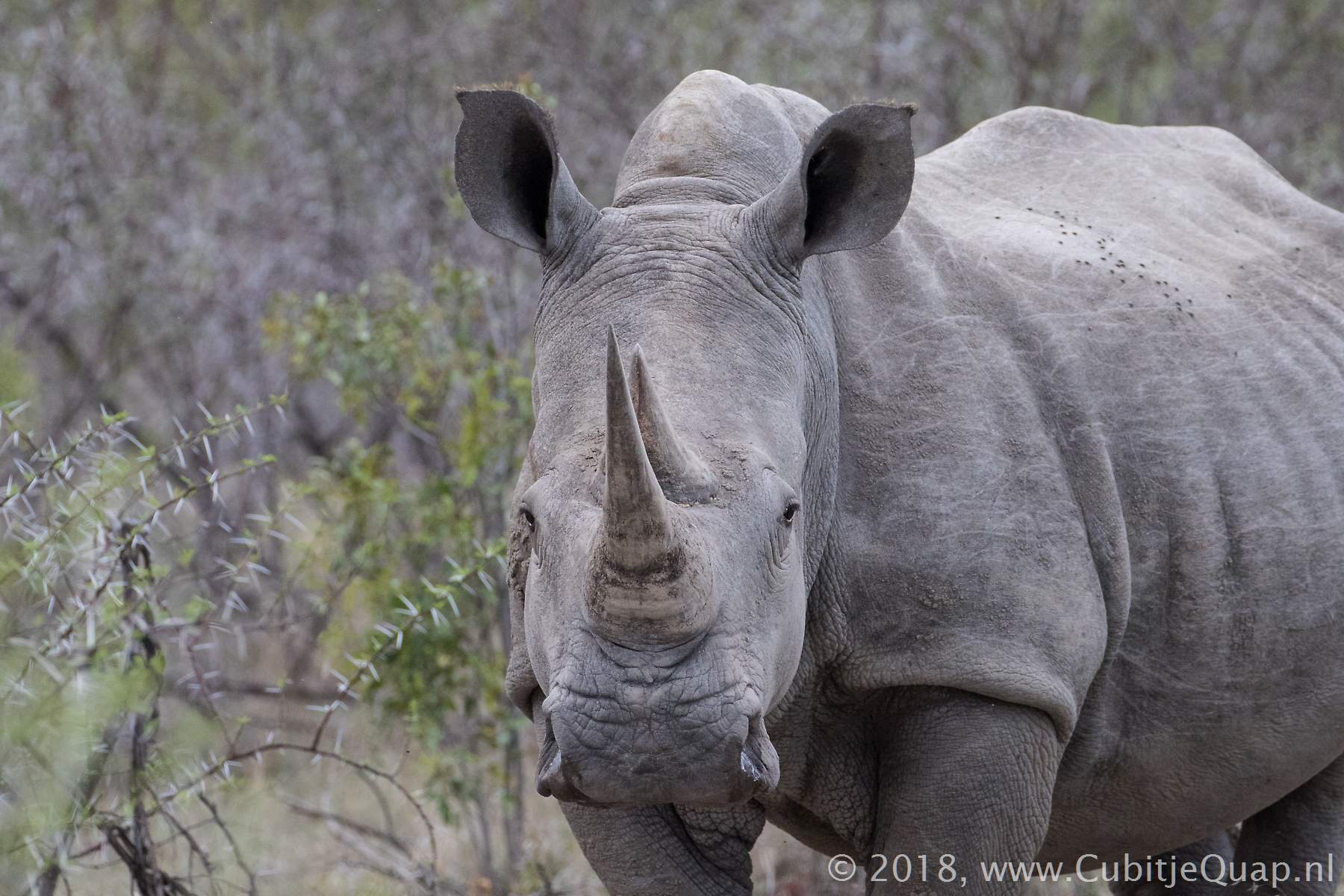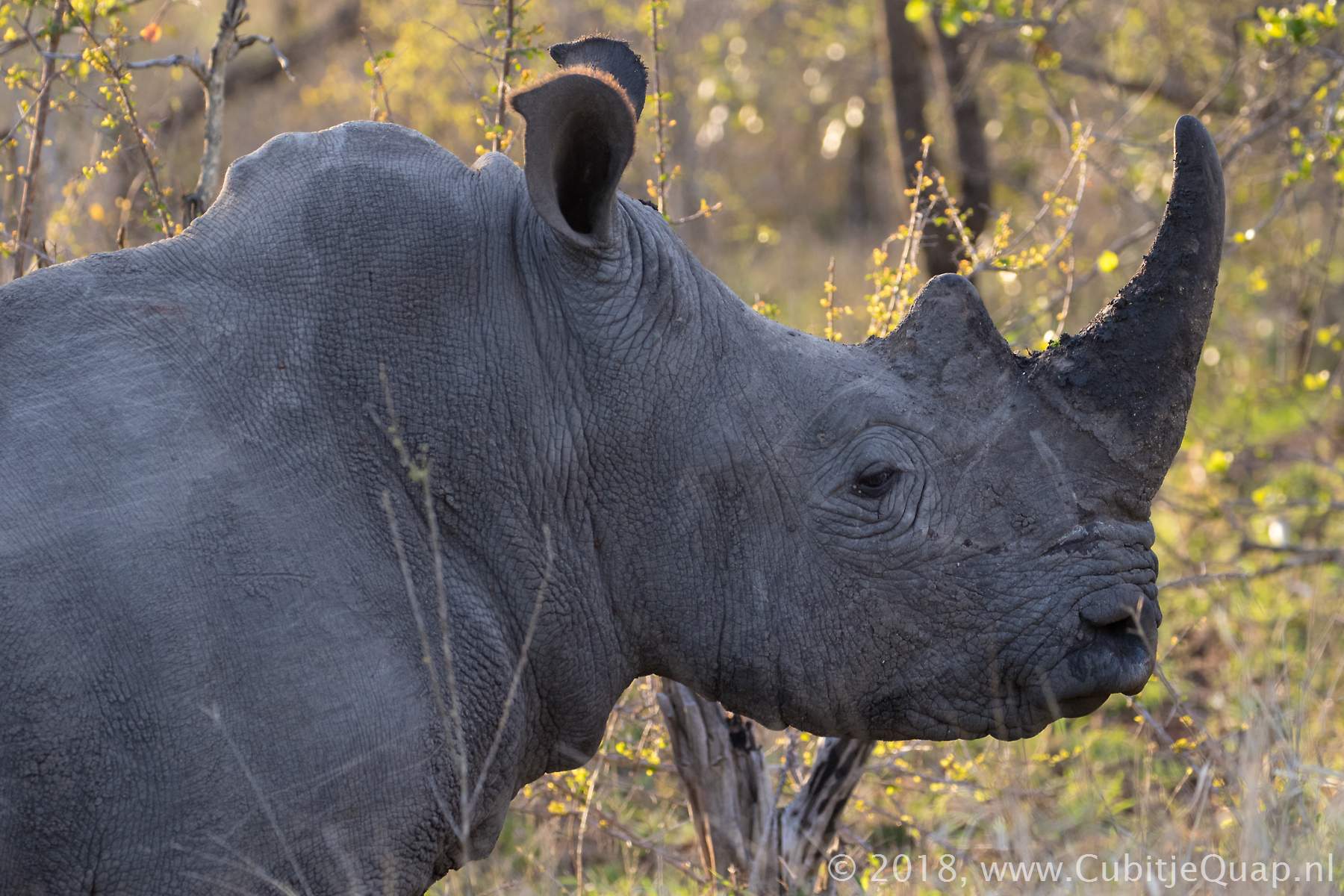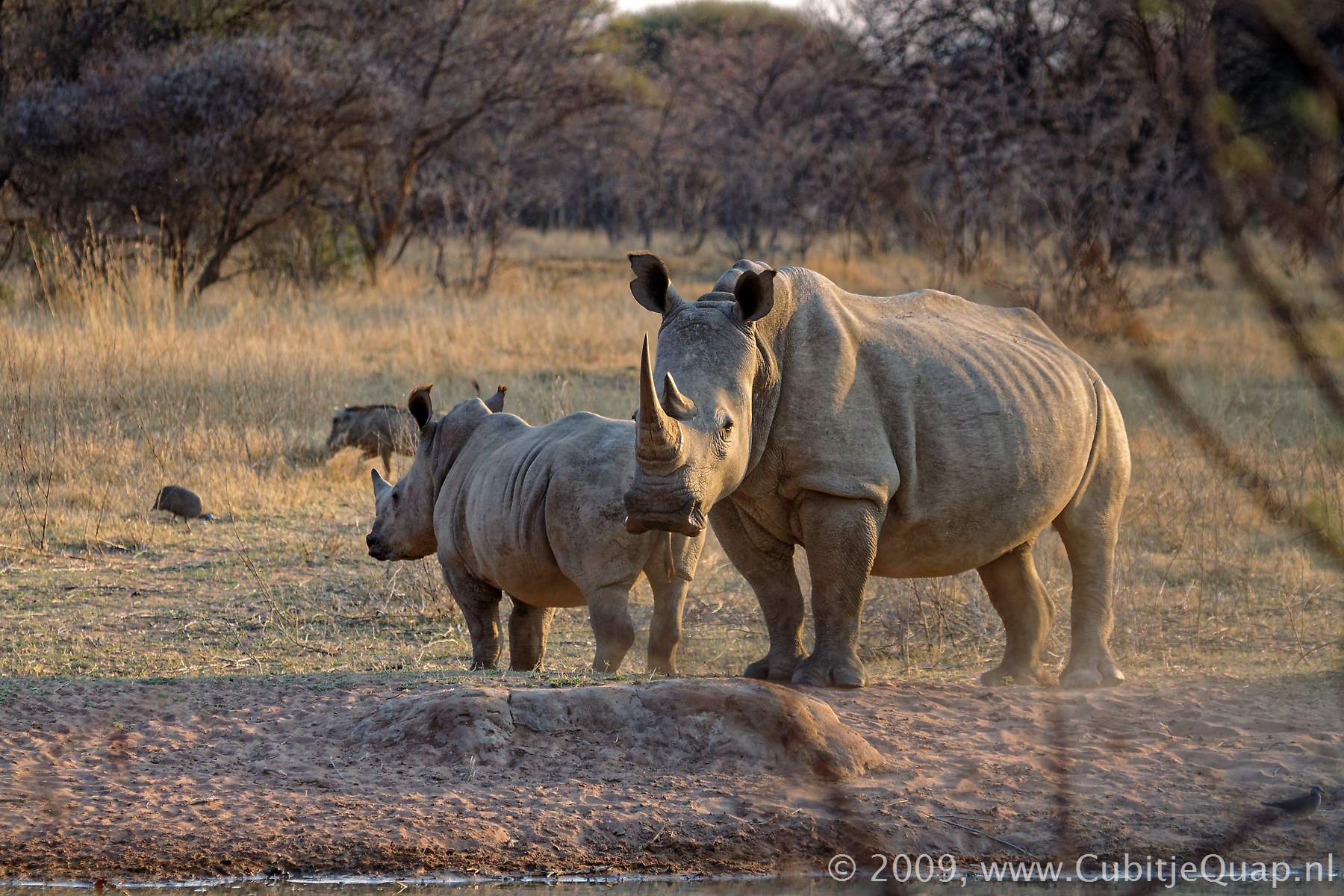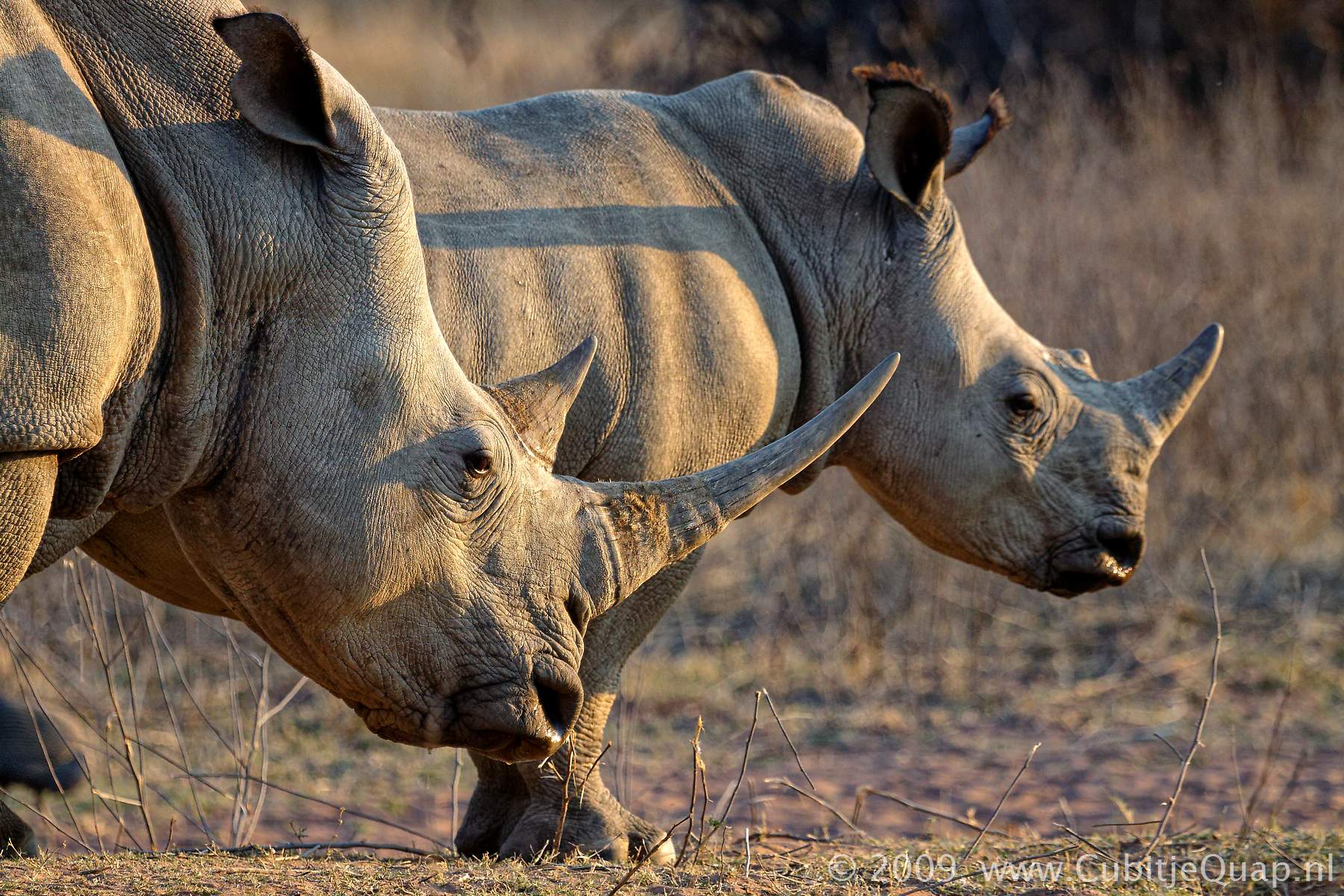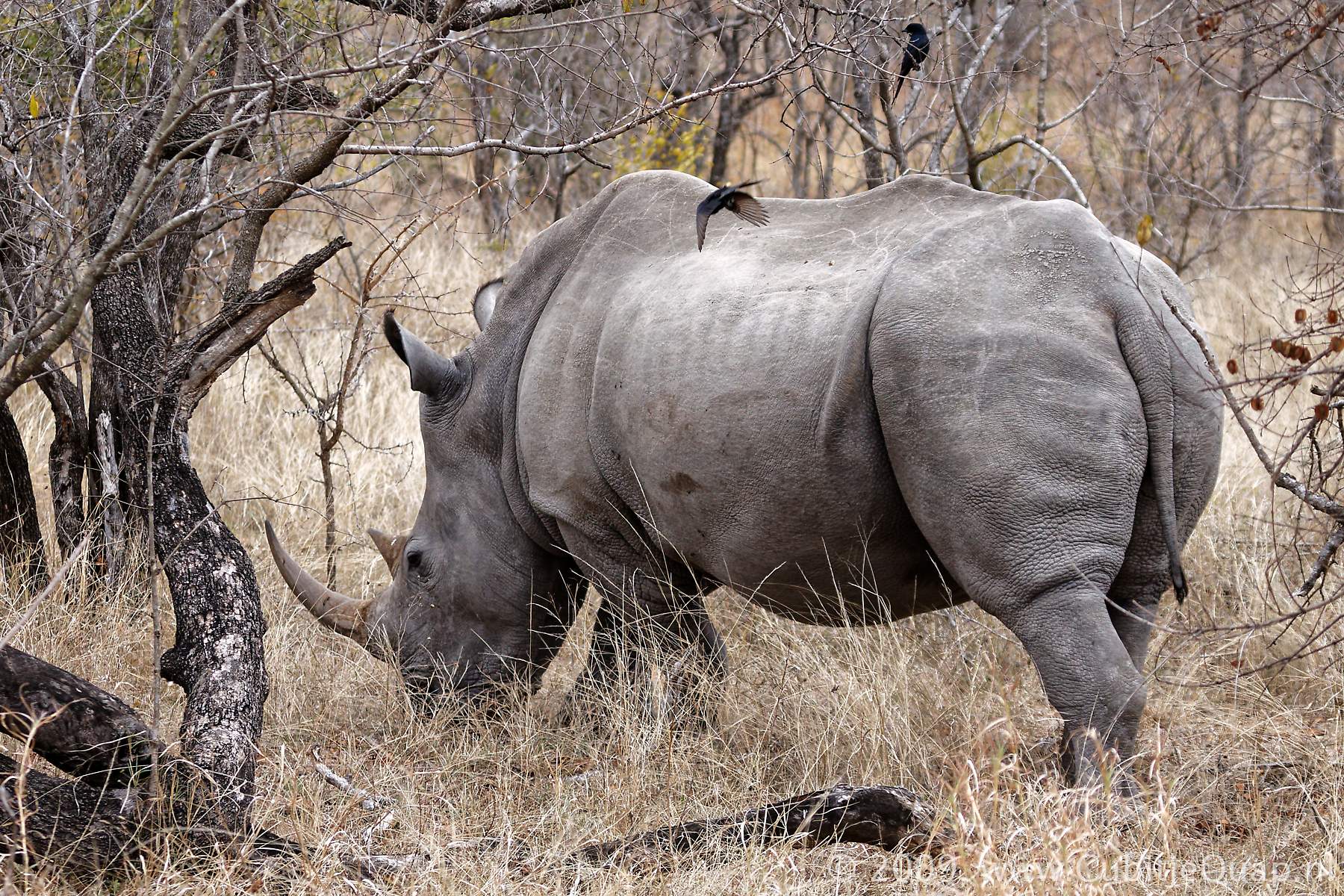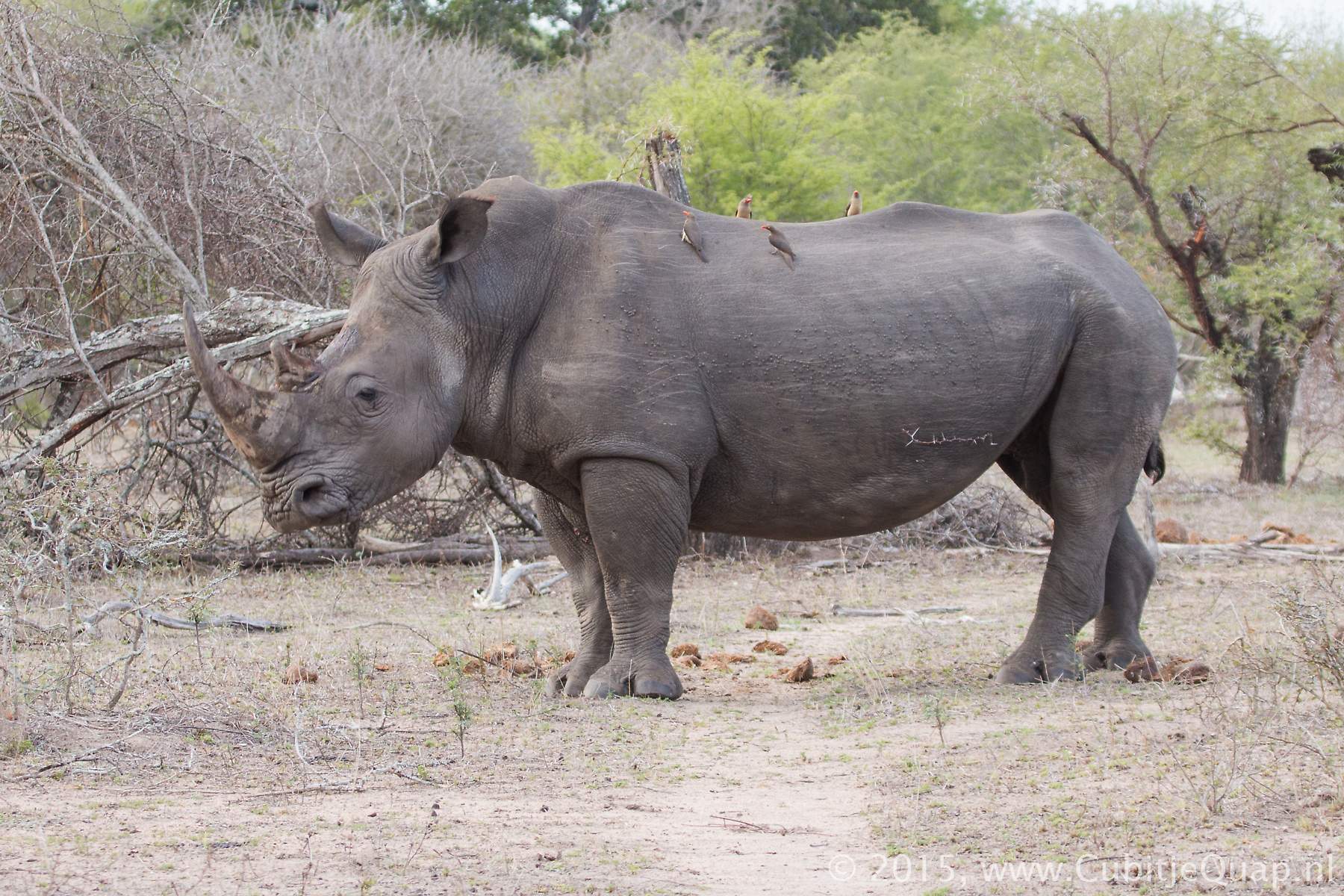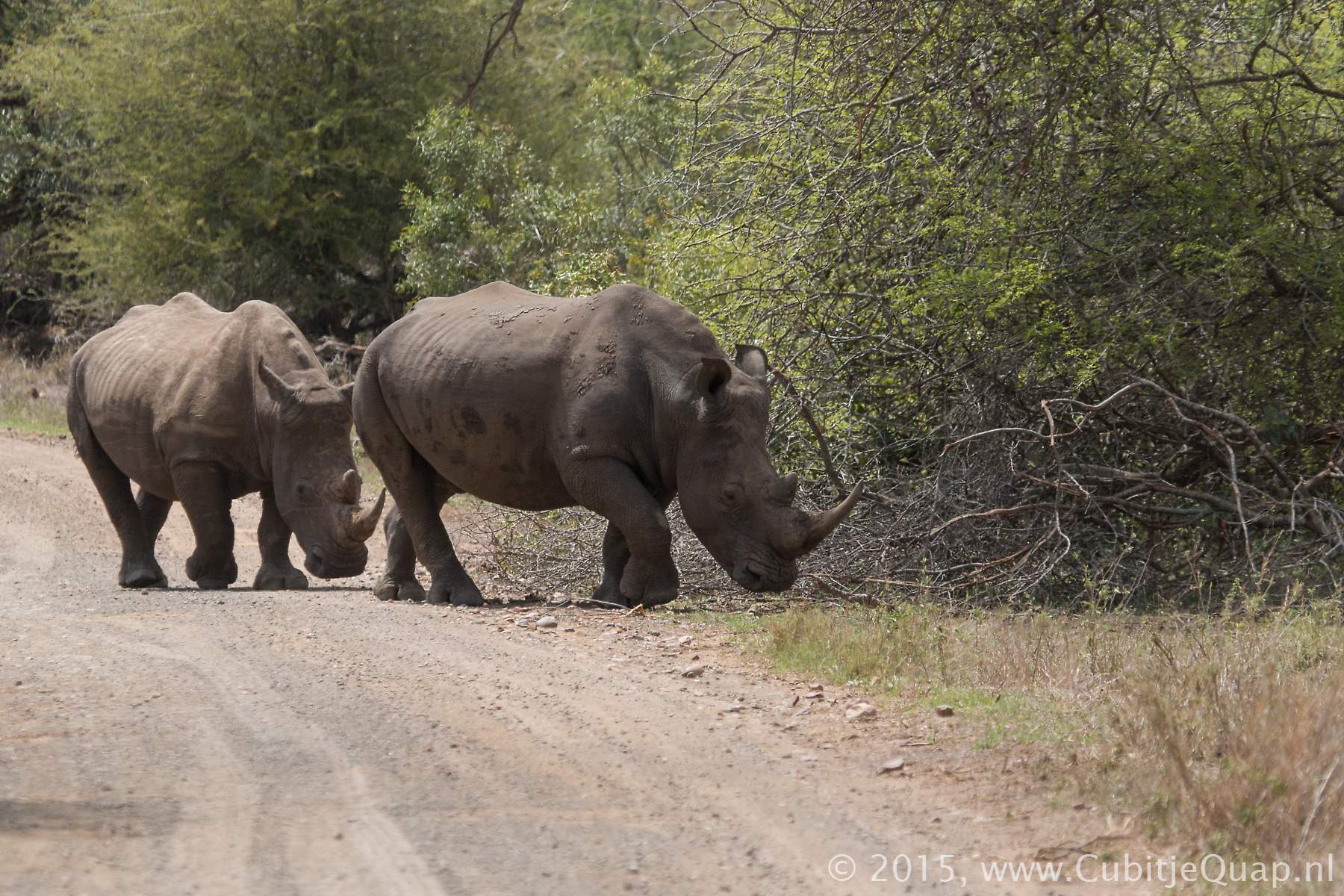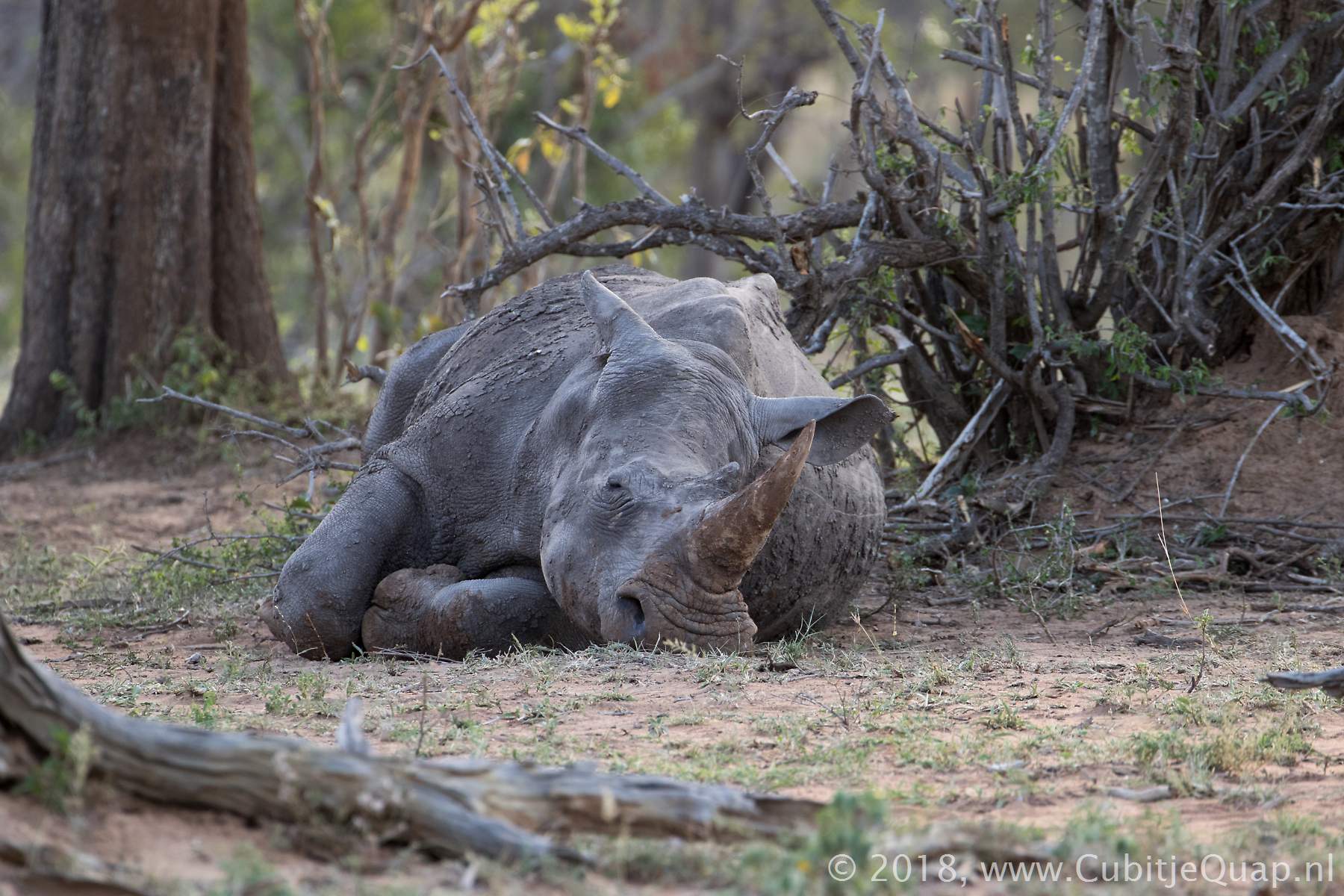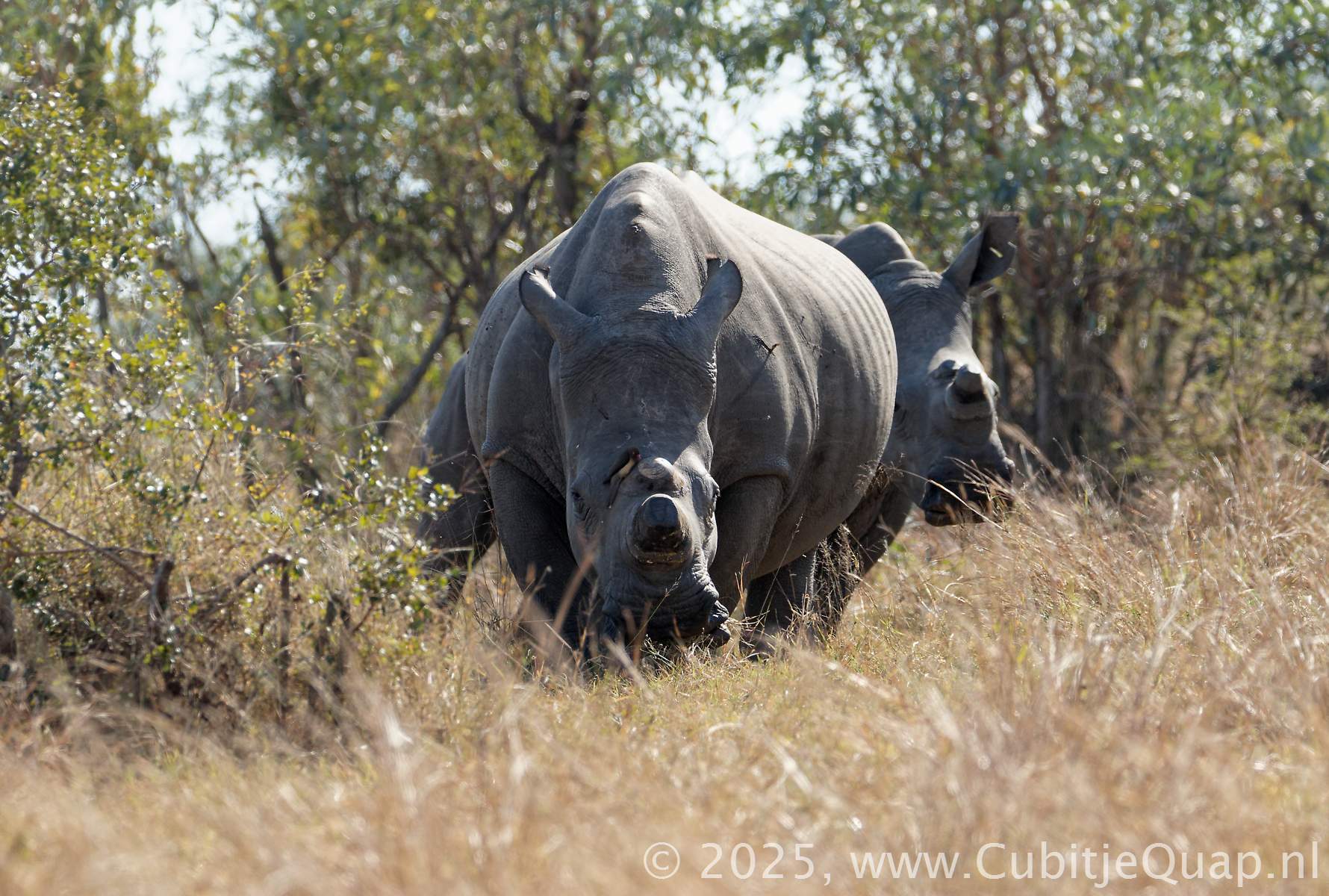Cow: Shoulder height 180 cm; tail 100 cm; mass 1400 - 1600 kg
The square-lipped rhinoceros is much larger than the hook-lipped rhinoceros. The skin-colour is grey, but this is often influenced by the colour of the mud and dust in which it rolls. A large, distinctive hump is present on the neck. The head is long and carried low, frequently only a few centimetres above the ground, and terminates in a broad, square muzzle. There are two horns on the face, the front one usually being the longer. The ears are large and pointed.
The white rhino can be distinguished from the black rhino by some features in its appearance. The white rhino is larger than the black rhino and it has a a square muzzle and a hump on the neck.
They are active at night but feeding takes place during the cooler morning and afternoon hours.
Both rhino species have rapidly declined in numbers as a result of the demand for their horns. The horns were carved into dagger handles for tribesmen and were used in the production of traditional medicines.
Wikipedia - black rhino
(sc) Ceratotherium simum
(nl) Witte neushoorn
(af) Witrenoster

